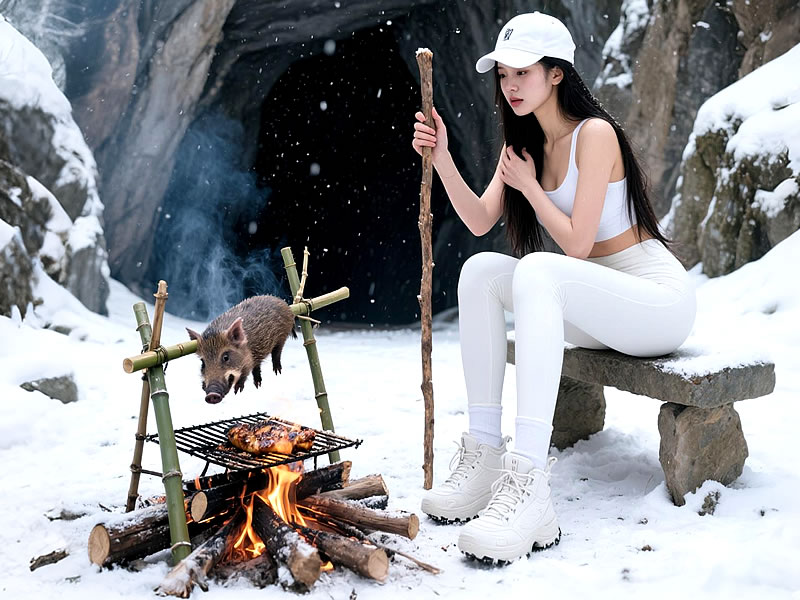How to avoid hypothermia in cold-weather adventures?
When embarking on cold-weather adventures, whether it's skiing in the mountains, hiking through frosty trails, or camping under a winter sky, the risk of hypothermia looms large. Hypothermia occurs when the body loses heat faster than it can produce it, leading to a dangerously low core temperature. Understanding how to prevent this life-threatening condition is crucial for a safe and enjoyable outdoor experience.

Understanding Hypothermia: The First Line of Defense
Before delving into prevention strategies, it’s essential to understand hypothermia. Normal body temperature hovers around 98.6°F (37°C). When it drops below 95°F (35°C), hypothermia sets in. Early symptoms include shivering, cold and pale skin, and mild confusion. As the condition worsens, shivering may stop, speech becomes slurred, and coordination deteriorates. In severe cases, unconsciousness and cardiac arrest can occur. Recognizing these signs empowers adventurers to take timely action.
The Art of Layering: Clothing as a Shield Against the Cold
One of the most effective ways to prevent hypothermia is proper clothing. Layering is key. The base layer should be made of moisture-wicking materials like merino wool or synthetic fabrics. These materials draw sweat away from the skin, keeping you dry. A damp body loses heat 25 times faster than a dry one, making moisture management critical.
The middle layer provides insulation. Fleece, down, or synthetic insulation traps warm air close to the body. The thickness of this layer can be adjusted based on the temperature. For extremely cold conditions, a thicker, more insulating layer is necessary.
The outer layer serves as a barrier against wind, rain, and snow. It should be waterproof and windproof. Look for breathable materials to prevent condensation buildup inside the jacket. Don't forget accessories—insulated hats, gloves, and thick socks are essential, as a significant amount of body heat is lost through the extremities.
Nutrition and Hydration: Fueling the Body's Furnace
Your body needs energy to generate heat. Consuming high-calorie foods, such as nuts, dried fruits, and energy bars, provides the fuel necessary to maintain a healthy body temperature. Warm, high-carbohydrate meals, like soups, stews, and hot cereals, not only offer energy but also a comforting boost in the cold.
Hydration is equally important. Even in cold weather, the body loses water through respiration and sweating. Dehydration impairs the body’s ability to regulate temperature. Drink warm fluids regularly, but avoid alcohol and caffeine, as they can dehydrate the body and increase the risk of hypothermia.
Shelter and Rest: Creating a Warm Haven in the Wild
When engaging in cold-weather adventures, having a proper shelter is vital. If camping, choose a tent designed for cold weather. Set it up on a dry, elevated surface to avoid ground moisture. Use insulated sleeping pads and sleeping bags rated for the expected temperatures. Consider adding a sleeping bag liner for extra warmth.
Taking regular breaks in a sheltered area, such as a cabin or a well-insulated tent, helps prevent prolonged exposure to the cold. If caught in bad weather, seek immediate shelter. Even a small, improvised shelter can significantly reduce heat loss.
Activity and Awareness: Balancing Exertion and Caution
Staying active generates body heat, but overexertion can lead to excessive sweating, which cools the body once you stop moving. Pace yourself during physical activities. If you start to sweat, remove a layer to prevent getting wet.
Being aware of your surroundings and the weather forecast is crucial. Check the forecast before your trip and monitor conditions throughout. Sudden changes in weather can increase the risk of hypothermia. Familiarize yourself with the terrain and have a contingency plan in case of emergencies.
Emergency Preparedness: Planning for the Worst
Despite all precautions, emergencies can still happen. Carry an emergency kit that includes items like a space blanket, fire-starting tools, a first-aid kit, and a whistle. A space blanket reflects body heat, helping to prevent further temperature loss. Fire-starting tools can be used to build a warming fire if needed.
Inform someone of your itinerary, including your planned route and expected return time. This way, if you don't return as scheduled, help can be sent.
In conclusion, avoiding hypothermia during cold-weather adventures requires a combination of knowledge, preparation, and awareness. By understanding the risks, dressing appropriately, maintaining proper nutrition and hydration, seeking shelter when needed, pacing your activities, and being prepared for emergencies, you can minimize the risk of hypothermia and enjoy the beauty of the great outdoors in cold weather safely.






